Spanish Culture: Holidays in Argentina | donQuijote
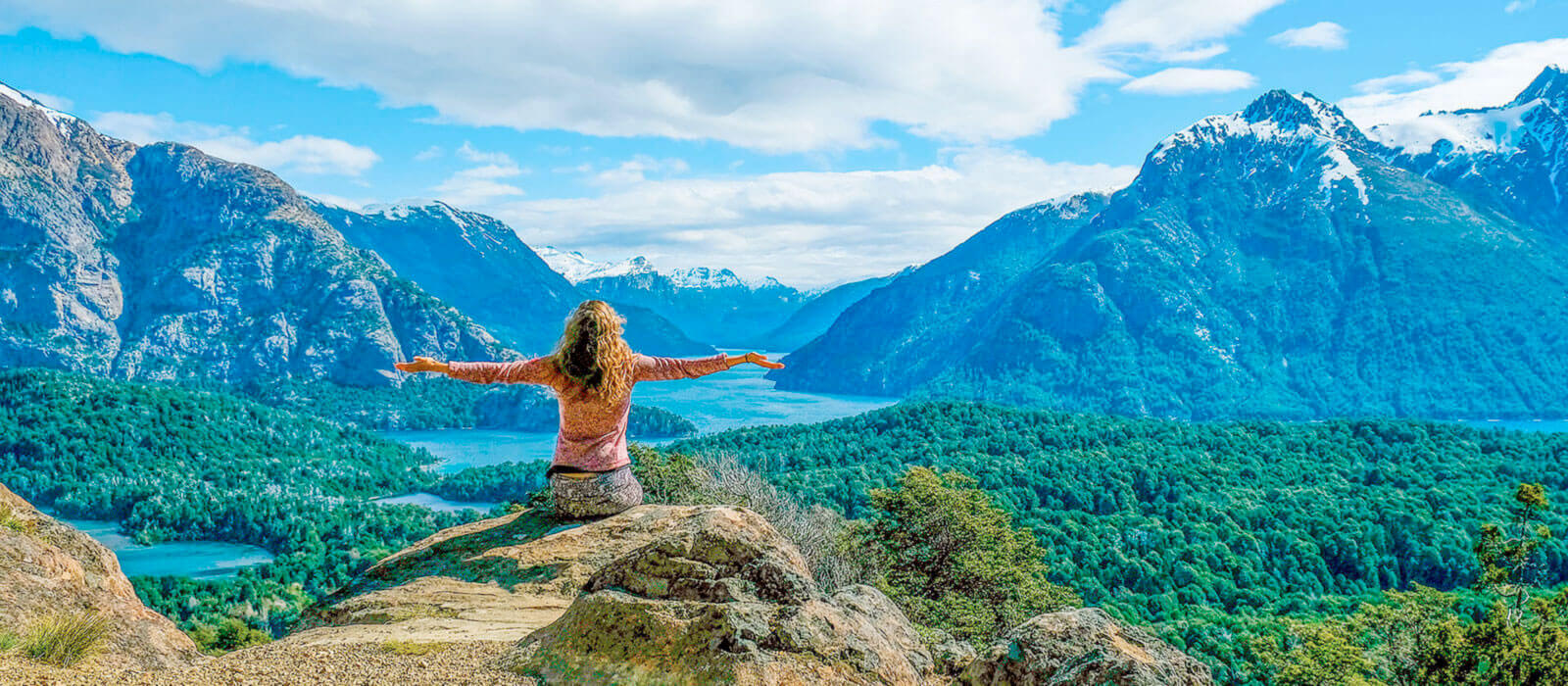
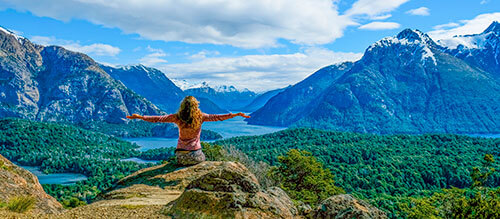



December is a period of the year full of celebrations and family events. In many countries around the world, festivities begin on the week around December 25th. However, Latinos start with some ceremonies way earlier than that.
Most holiday traditions in Latin America have to do with great food and the company of loved ones. Yet, some countries have special habits that make this time of the year a wonderful moment to pay a visit.
In this post, we show you some of their holiday customs. Click here if you want to read it in Spanish.
Candles Day

December 7th marks the beginning of the holiday season in Colombia. Families, friends, and neighbors light up many ornamental candles on the street.
They do it to honor the Virgin Mary and her Immaculate Conception, which is celebrated the day after.
Posadas or Lodgings

Children in Mexico and Guatemala, among other countries, dress up as Mary and Joseph. They then participate in small parades that go door to door around the neighborhood to find shelter.
Inside, hosts offer them hot beverages, cookies, and some traditional foods such as steamed tamales. To close this ceremony, they hit a big star-shaped piñata.
New Year’s Eve

In many countries around Latin America, people still preserve a very special tradition to bring the year to an end. On New Year’s Eve, they make life-size puppets with cardboard and fabric pieces.
At midnight on December 31st, they burn the puppets to get rid of all negative things and make a good start to the new year.
Frequently, these figures represent popular characters from the political arena. Every year, this tradition becomes a satirical showcase of today’s society.
Christmas with Warini
Warini is the character who brings Christmas to Honduras. Covered with a mask, he dances at home on Christmas Eve accompanied by a band with drums.
These are just some of the most popular Latin American traditions for the holiday season. You may have spotted some differences with the Spanish holiday habits.
If you want to discover more about Latin customs, take advantage of your Winter Break and sign up to one of our Spanish programs. We are waiting for you!
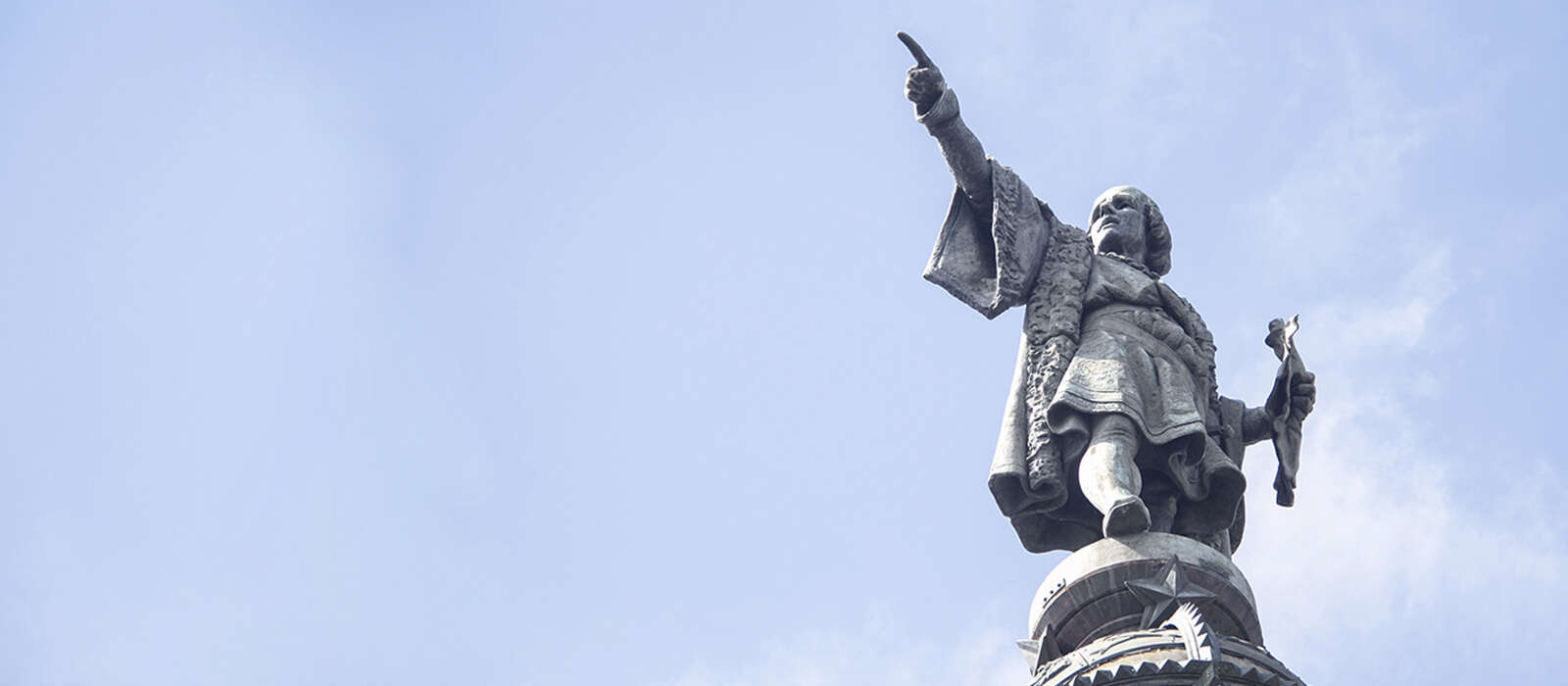
Christopher Columbus arrived to the Americas for the first time on October 12, 1492. The historic event marks an important change in the course of the history of the Western world, as it lead to permanent contact between Europe and the Americas. The day is officially observed in a variety of ways and called a variety of names in much of Latin America, the US and Spain.
Spanish law establishes it as the Fiesta Nacional de España, or the national day of Spain, although many Spaniards continue referring to it as Día de la Hispanidad, which was the former name of the Spanish holiday. The law goes on to explain that the day is commemorated because it symbolizes the expansion of Spanish language and culture beyond European borders. Spanish is spoken by 414 million native speakers, of which only 46 million live in Spain.
When the day was first celebrated in Spain in 1914, it was originally called “fiesta de la raza” in the hopes of creating a holiday that would celebrate unity between Spain and Ibero-America. Just a few years later, the Spanish priest Zacarías de Vizcarra proposed replacing the term raza with hispanidad, a new term coined for the occasion.
October 12 is still known as el Día de la Raza in some Latin American countries including Mexico. Other Latin American countries however, that once commemorated the day as el Día de la Raza have in recent years changed the name to honor diversity or to celebrate indigenous heritage. In Costa Rica, the day is known as the Día de las Culturas (Day of the cultures), in Argentina it’s Día del Respeto a la Diversidad Cultural (Day of respect of cultural diversity), in Venezuala Día de la Resistencia Indígena (Day of Indigenous Resistance), and in Bolivia Día de la Descolonización (Day of decolonization). In Cuba it is not observed as a holiday.
Many US states also observe October 12 as a holiday, where it is usually referred to as Columbus Day, but not always; attitudes about how the day should be defined are changing there also. The state of South Dakota for example now celebrates Native American Day on the second Monday of October, and the city of Los Angeles has replacing Columbus Day with Indigenous Peoples Day.
In 2010, the United Nations declared October 12 Spanish Language Day to celebrate cultural diversity and to encourage the “equal use” of all 6 of the UN’s official languages throughout the organization.
October 12 is observed in different ways in the US and around the Spanish speaking world, where it has been redefined throughout history. Today, Spanish is the second most spoken language in the world in terms of native speakers and it is spoken as an official or main language in 21 different countries.
WE ARE CELEBRATING THE DIVERSITY OF SPANISH. HAPPY "DÍA DE LA HISPANIDAD"!
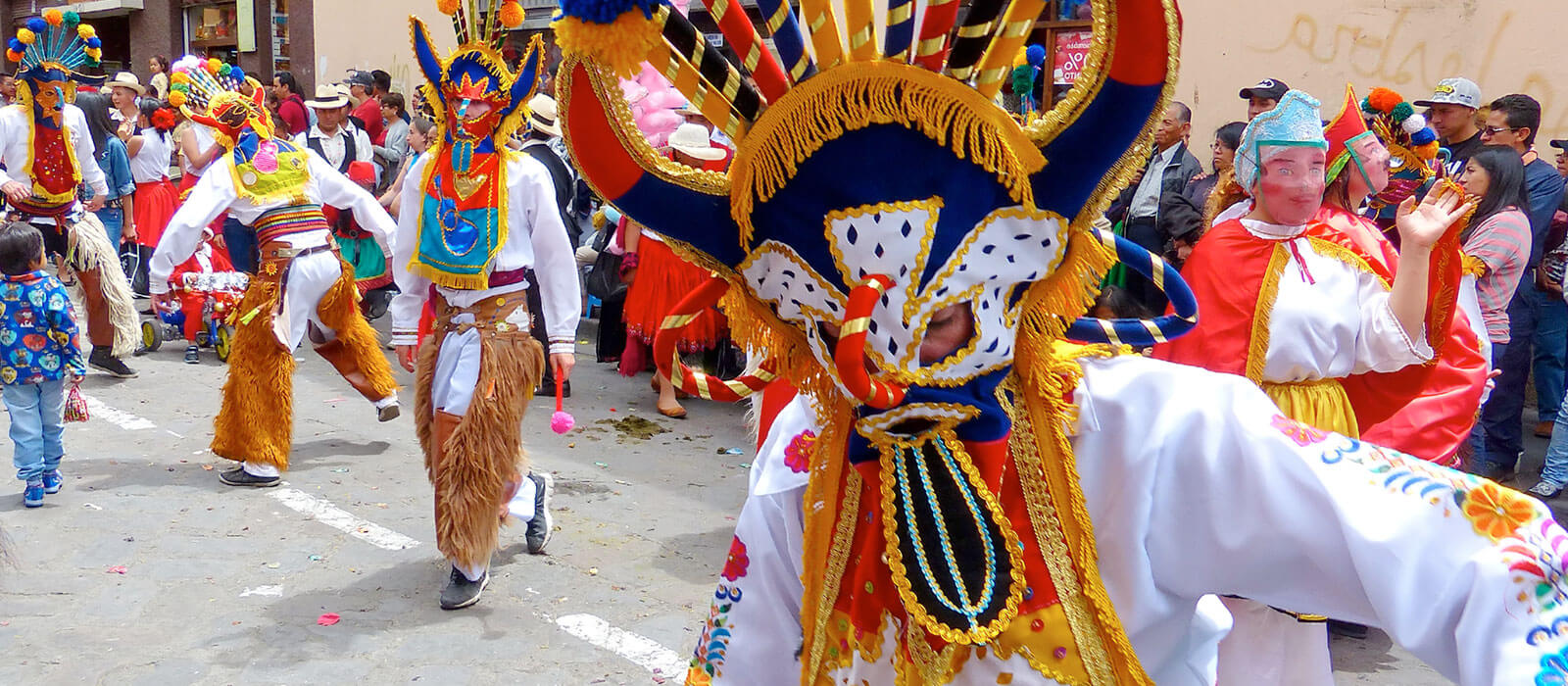
Christmas is magical in every home, and in Latin America even more so. Here, old traditions are united with more brought from Spain, all often celebrated by the warming light of a summer’s sun. All of this makes for a fascinating, curious and very colorful celebration. Would you like to know more?
First, we’ll stop in Mexico where Christmas begins on the 16th of December and its posadas- popular festivities that remember Mary and Joseph’s pilgrimage from Nazareth to Bethlehem to await the birth of their son. And the Pastorelas, theatrical displays which celebrate the shepherds’ hardships on their journey to visit the Baby Jesus. But we’ll leave the hardships aside and move on to the joyful piñatas. Mexican piñatas are special: shaped like a seven-pointed star, one for each of the capital sins and, when they are finally broken, the shower of sweets that rains down represents the reward for having resisted those temptations.

And now to Ecuador. Here there are beautiful versions of the famous Nativity Scene, representations of the birth of Jesus, where it is tradition to cover the figure of the infant Jesus until the day of his birth, on Christmas Eve. By the way, in Ecuador the little ones write a letter to Christ, at least one month before Christmas, in which they ask for gifts for having behaved well. The most colorful celebration takes place during New Year's Eve: dolls are displayed on house doors, each one a testament to things left behind in the year. At midnight, these dolls are burned to ward off any harm that may come in the following year.
In Costa Rica an impressive celebration called Tope takes place. Riders and their horses from all over the valley of San Jose, bands, even clowns and dancers take part. Another typical Christmas celebration in Costa Rica also has a humanitarian element: it is the traditional illumination of the Hospital de los Niños, a beautiful, spectacular and very emotional act. The joy continues in the Festival de Luz, a nocturnal parade in which bands play and spangling floats fill the streets with wonderful images.

A festival of light is also a fundamental element in one of Colombia's most endearing celebrations. On December 7, the Catholic’s eve of the Immaculate Conception, thousands of Colombians offer lit candles on the streets; its purpose? To guide the Virgin in her path. Equally moving is the celebration of the Novena de Aguinaldos, in which, around a manger, children and adults sing Christmas carols during the 9 days, while exchanging typical sweets and desserts.
One of the most curious Christmas traditions of Peru takes place in the town of San Pablo, between Cuzco and Pruno: the Race of the Magi. In it the kings, who are not named "Melchor", "Gaspar" or "Baltasar" but Inkarri, Mistirri and Negrorri, compete for the town’s fortune the following year. If Inkarri wins, it will be a good harvest year in the valleys of Cuzco; if Mistirri wins, the lucky region will be the altiplano with its cattle; if it’s Negrorri, there will be shortages in all the regions, but fortune will come in the form of money.

In Chile, the most characteristic and fascinating part of Christmas also has its roots in nature. Being in the southern hemisphere, December is summertime, so you can celebrate the arrival of el Viejo Pascuero (that's how they call Santa) on the beach with a cold glass of cola de mono, a traditional Christmas cocktail, a warming mix of brandy, milk, coffee, sugar, cinnamon and vanilla.
Another country that celebrates Christmas in a summer atmosphere is Argentina. It is curious and delightful to see the streets, with the sun shining down, decorated in typical winter elements. And savoring the Argentinian grill a la canasta will make most anyone’s mouth water.
With this we conclude our stroll through Christmas in some of the places in Latin America. There are many more countries to visit, many more Christmas customs... and we invite you to discover them.
And of course… MERRY CHRISTMAS TO ALL!
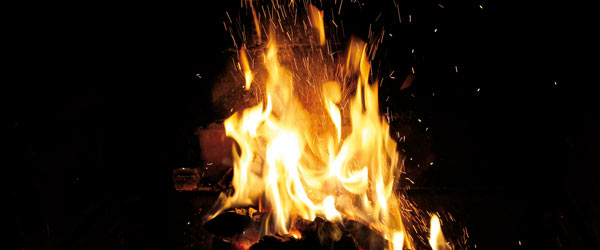
The night of San Juan is an ancient and traditional festival in many countries celebrating the beginning of summer. From Finland to Brazil, this festival in honor of San Juan is celebrated in different forms. In Spain, this old traditional summer festival takes place every year on the evening of June 23. Many towns and villages organize bonfires and parties on the beach or in the city center. The largest bonfire in Spain is on the beach in Alicante and is also known as "Las Hogueras de Alicante".
Looking at the past, the Hogueras originally had to do with celebrating the longest day on June 23 in the countryside. The celebration officially began with a festive dinner using local produce from the land, and around midnight the bonfires were lit around which residents danced. Over the years the traditional way changed, but in 1928 the Hogueras of Alicante were formally established. Today, it is somewhat similar to the Las Fallas festival in Valencia celebrated in March.
Now Alicante celebrates the tribute to San Juan starting June 19 for several days. During these days, the entire city is filled with large papier-mâché or wooden dolls called ninots, fireworks, mascletas, music and giant bonfires. A great popular festival with a spectacular ending on the night of June 24, when the créma begins: the burning of the dolls in the hundreds of bonfires that flood the sky with an orange hue. On the beach, the party continues into the early hours.
These days are of course dedicated to San Juan, but during the rest of the year Alicante is the perfect city for a city break. The medium-sized city is located on the Costa Blanca and has a diverse history with Roman and Moorish influences. Some important sights in Alicante include the Castle of Santa Bárbara, the old town hall and many impressive churches. The city has beautiful beaches for relaxing and good restaurants serving typical Spanish cuisine.
The Hogueras of Alicante is one of the most important and popular fiestas in Spain and in the province of Alicante. The Hogueras of Alicante equal fire, large papier-mâché dolls, music, parades and a cheerful summer atmosphere. For a few days, the city turns into one big party destination. Enjoy the arrival of summer in the best way possible: experiencing the magnificent and enormous bonfires of San Juan in Alicante.
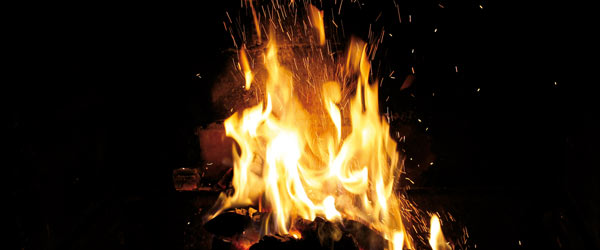 <!-- Revive Adserver Etiqueta JS asincrónica - Generated with Revive Adserver v5.0.2 --><ins data-revive-zoneid="7" data-revive-id="ec923599c3fad9b044f22a6a73433428"></ins><script async src="//ads.iegrupo.com/www/delivery/asyncjs.php"></script>
Tessa
<!-- Revive Adserver Etiqueta JS asincrónica - Generated with Revive Adserver v5.0.2 --><ins data-revive-zoneid="7" data-revive-id="ec923599c3fad9b044f22a6a73433428"></ins><script async src="//ads.iegrupo.com/www/delivery/asyncjs.php"></script>
Tessa

Argentina's oldest carnival is celebrated in the town of Humahuaca, located in the Yujuh province in the northwest of the country. During the months of February and March, Humahuaca is the capital of the carnival in the Gorge area. Located among the colorful mountains of Salta, Humahuaca is known for its carnival. Not only during the months when carnival is celebrated, but also during the rest of the year masks, costumes and rituals of the carnival can be found.
Even though the celebration of carnival is in the month of February or March, preparations keep locals busy all year long. As soon as in February, the "Devil" arrives from the mountains, the carnival has begun. The 'Devil' is a rag doll that stands as a symbol of the carnival. The tradition is that every year at the end of the carnival, the rag doll is buried and dug up again with the next carnival. After this, the carnival celebrations begin with feasting, dancing and drinking and a lot of traditional music is made with old instruments such as the quenas (Andean flutes with two open ends), guitars, pan flutes and accordions.
So the carnival officially begins on the Saturday before Ash Wednesday with the unearthing of the rag doll and lasts for nine days. In Humahuaca, it begins a few days earlier because the so-called Tantanakuy (traditional old musicians from all over the country) gather. Carnival is celebrated in a natural, old-fashioned way on the streets. The enthusiastic locals are dressed in colorful costumes and most wear imposing masks. Wearing masks is very popular during carnival to remain anonymous. Many rituals are participated in. One of these rituals is the Topamiento tradition: hundreds of men walk toward town in search of a dance partner for the rest of the evening.
Carnival in northern Argentina is a mix between pre-Columbian pagan rituals and the traditional carnival celebrations of Christians. Naturally, there is a lot of drinking, dancing and partying. Argentine traditions such as throwing white powder at each other, hurling serpentines and confetti in each other's faces and wearing basil leaves in your ears are also part of the Humahuaca carnival. The famous carnival is attended by local, Argentine and foreign visitors alike.
On Palm Sunday, the sixth Sunday of the year, the rag doll is again buried in a hole at the foot of the hill. This ritual is very sad and full of emotions. "May the carnival Devil come back soon" the people whisper and this is how the Humahuaca carnival ends. The carnival can be visited from larger cities such as San Salvador but many visitors also go on foot or on a mule. Even if you don't visit the carnival in February, the carnival can also be seen the rest of the year. Several museums in Humahuaca display crafts, paintings, sculptures, masks and costumes.
This carnival in Argentina is one of the most famous and popular carnivals in the Argentina and if you are around during this festival, it is definitely worth a visit to experience carnival in a different country and culture!

A number of festive celebrations, some religious and some secular, take place throughout the month of December around the Spanish speaking world, where the holiday season often extends well beyond the 24th and the 25th.
Countries located in the southern hemisphere that have strong Christmas traditions greet the season in the middle of their summer time, where culinary and decorative holiday traditions are adapted to warmer temperatures, as they are in tropical neighboring countries near or on the equator.
|
|
|
In Chile, children anxiously await the arrival of the Viejito Pascuero (as Santa Claus is known in Chile). Chileans also attend the misa del gallo (literally “rooster’s mass), a midnight mass offered on Christmas Eve. |
|
Christmas in Argentina: Argentines plan a special meal for the evening of the 24th in which everyone brings a different dish to contribute to the Christmas dinner. It’s also common to see “live nativity scenes” in churches around Argentina. |
|
If you’re in Uruguay on Christmas Eve, don’t be surprised when you hear fireworks erupting at midnight as friends and family members toast one another with fresh cider. You may end up hanging out and having fun until late, but not to worry; you can spend Christmas Day relaxing on the beach (it’s summer in Uruguay). |
|
|
|
|
|
|
|
|
|
|
|
|
In many Latin American countries it’s common for the Christmas period to extend from the middle of December until well into the new year and beyond King’s Day (January 6th). On December 7th in Guatemala, they burn an effigy of the Devil, and on that same day in Colombia it’s el día de las velitas (Day of the Little Candles) when candles are placed everywhere to honor the Virgin Mary. In Honduras, Mexico and Venezuela, starting from December 16th, the nine-day Posadas celebration begins. In many of these places, the Christmas season doesn’t draw to a close until the day of Candelaria on February 2nd.